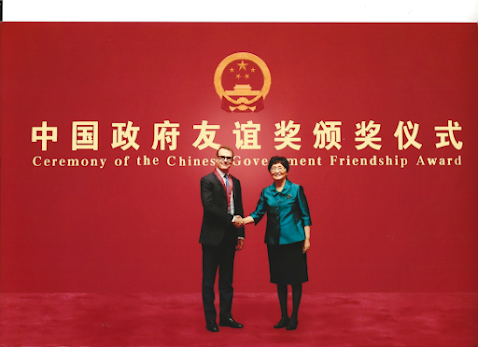Deeply Studying the Ecological Repairing and Restoration of Mining Areas | CBCGDF Research Team Went to Miyun to Conduct Bird and Insect Investigations
In order to deeply understand the ecological status of the mining area, the transformation problems it faces, and provide strong data support for future ecological restoration and restoration, the China Green Biodiversity Conservation and Green Development Foundation (CBCGDF) established a biodiversity research team to go to Shouyun and Weike mining areas for the first biodiversity investigation. Bird and insect observation is one of its tasks.
On October 14, 2024, the CBCGDF researchers went to the two mining areas to carry out bird and insect observations.
For the field investigation of birds, the sampling method is used for direct counting. Within 3 hours after sunrise and 3 hours before sunset, the wind speed is less than 4m/s and the sky is clear. The observer stands in the center of the sample plot, uses visual observation combined with telescopes and bird calls to identify the names and numbers of birds that appear within 50m around the monitoring point and record them. Each sample plot survey lasts 10 minutes. A total of 11 sampling points (4 in and around the Weike mining area, 3 in and around the Shouyun mining area, and 4 in reservoirs, rivers, and villages outside the mining area) were selected within the research scope for this survey, and observations were conducted for 110 minutes. The distribution of the survey sampling points is shown in the figure below:
At the same time, the researchers set up sticky boards to investigate insects. Five sticky boards were placed in the Weike mining area, five in the Shouyun mining area, and two outside the mining area (one of which was lost and could not be retrieved). The yellow sticky board can attract and stick to insects. The sticky board was hung on the leaf canopy or the top of the target crop. After hanging for 24 hours, the yellow sticky board was retrieved with plastic wrap, and the types and numbers of insects stuck on the sticky board were identified. The distribution of sticky insect boards is shown in the figure below:
In addition, the insect investigation set up 6 surface trap cups in square plots in corn fields around the Wick mining area. The trap cups are hard plastic cups with a cup diameter of 8 cm and a volume of 450 mL. 2/3 of saturated salt water was poured into the cups, and 3 to 5 drops of detergent solution or soapy water and white sugar were added. After 24 hours, the types and numbers of surface arthropods caught in the traps were recorded.
Ecological restoration and biodiversity conservation in mining areas is a long-term and arduous task. The CBCGDF project team will continue to uphold the concept of green development, actively fulfill social responsibilities, and contribute to the promotion of ecological civilization construction. At the same time, we also call on all sectors of society to pay attention to the ecological problems in mining areas and work together to build a beautiful China.
Original article:https://mp.weixin.qq.com/s/KHzb0IL-xmDbh4_OOVWRuA
Translator: Daisy
Reviewed by Sara
Editor: Daisy
Contact: v10@cbcgdf.org; +8617319454776
Do you know? We rely on crowdfunding and donations. You have the opportunity to help an international movement to advance biodiversity conservation. Donate TODAY to power up the movement to make it a better world for all life.
Donation(501C3)Paypal: intl@wbag.org
https://www.paypal.com/donate?hosted_button_id=2EYYJJZ8CGPLE








Comments
Post a Comment